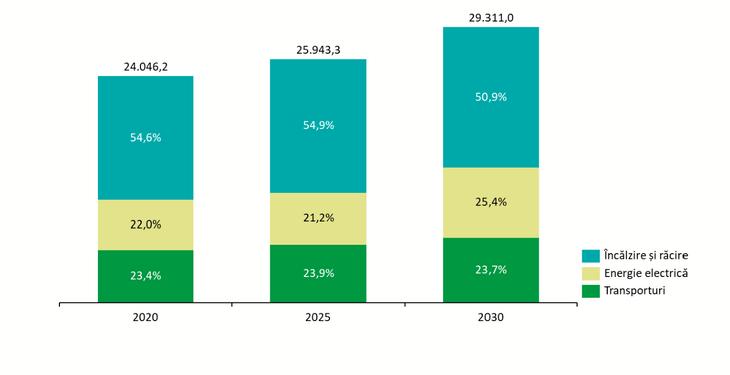In a first analysis of Romania’s Integrated National Energy Climate Plan (NECP) draft, which has just been launched in public debate for a few weeks, the Energy Policy Group (EPG) experts note that “in general, the NECP draft suffers from a lack transparency and rigor as regards the analytical basis and the necessary methodological clarifications”. The main shortcomings, according to the EPG, are the excessively optimistic estimation of the increase in energy demand at national level in the coming decade and the assumption of a target on the share of renewable energies far below the collective target decided at the level of the European Union.
Too much politics and not enough analysis
The authors of the EPG analysis note that “the NECP draft is not accompanied by a comprehensive and transparent methodological annex unequivocally explaining the link between the scenarios used in the PRIMES 2016 modeling and those in the draft […], and how the calculations have led to results that are different from those of the PRIMES 2016 projections. […] Methodological transparency and better public involvement of experts and stakeholders in drafting the NECP draft would have eliminated the feeling that some projections of strategic relevance, such as those on energy production and consumption are rather politically assumed than a result of rigorous and objective analysis.”
Where would the increased consumption come from?
For 2030, the NECP draft expects final power consumption to reach 86.6 TWh, well above the 51 TWh in the PRIMES 2016 projection, notes EPG. Also, a massive increase in final energy consumption is projected for 2030 (341 TWh compared to 269 TWh in the PRIMES 2016 projection, and 300 TWh in the 2019-2030 Energy Strategy draft). In the EPG expert’s opinion, the figures advanced are not supported by any explanation and appear to be used only for “accommodating net increases in electricity generation capacity by 2030 for almost all forms of primary energy – except for natural gas units whose total capacity stagnates, and coal, for which a slight decrease is expected.”
Data from the National Institute of Statistics show that since 2010, the annual percentage change in the final energy consumption in Romania exceeded only once the 2% level. In 2017, the final energy consumption expressed in thousands of tons of oil equivalent (ktoe) increased by 4.27% compared to 2016. Other variations were very close to zero (2011, 2012), negative (2013, 2014) or less than 1 pp (2015, 2018). However, the authorities, among them the National Commission for Prognosis, forecast a steady annual growth rate of energy consumption by more than 2% for the period 2019-2030.
The new EU targets are not taken into consideration
It is surprising, according to EPG experts, that the proposed RES share target of is only 27.9% for 2030, far below the national development potential under the conditions of economic efficiency, and also far below the collective target at EU level of 32%. The EPG analysis points out that “by simply accepting a more realistic 60-70 TWh electricity consumption level, the RES target in 2030 would be achieved without additional support policies.”
The EPG report recommends “an evaluative dimension of the measures and mechanisms included in the Romanian legislation in force as well as those envisaged to be included. At the same time, EPG also refers to the GEO adopted and published in the last days of 2018: “in the absence of new, unexpected regulations, contrary to EU policies, the high ETS price will facilitate substitution of coal by natural gas in the energy mix electric”.
